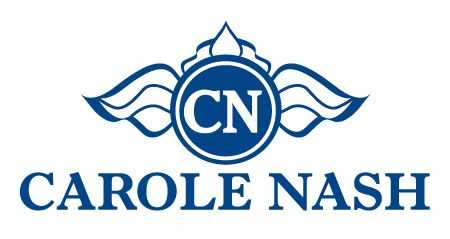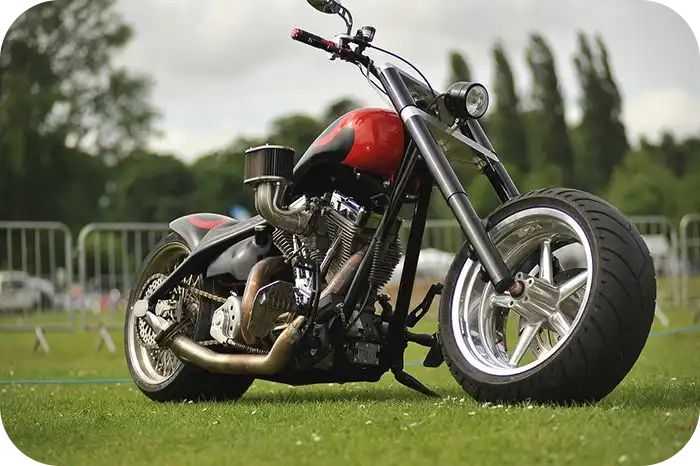motorbike insurance quotes
Helping riders save money on their motorbike insurance since 2006


Compare quotes from 43 insurance providers






Insure your motorbike, moped or scooter with one of the providers on our panel.

Making bike insurance easy since 2006
How comparison works

You tell us details about yourself and what you’re looking to insure

We provide instant quotes from a panel of top UK insurers

You choose the policy you want, buy it, and job done!
What is motorbike insurance?
Factors that may affect the cost of motorbike insurance
Keeping your annual mileage down could help you earn a cheaper premium quote. Typically, the less time you spend on the road, the less likely you are to be in an accident. Work out an average for how far you ride in a year, considering periods when you may be more active, like the Spring or Summer and get quotes based on this amount of mileage.
Bear in mind that if you overestimate your mileage, you may pay more for your motorbike insurance, but that if you underestimate it might be easy to accidentally stray over your mileage limit and this could cause problems if you need to make an insurance claim.
Smaller motorbikes with less powerful engines might cost less to insure. Larger bikes with more powerful engines typically demand a higher premium as replacements and repairs may be more costly for insurers and accidents could be more likely to happen with faster, powerful bikes.
Where do you store your bike, and how do you protect it? You may get cheaper motorbike insurance if your bike has properly fitted security devices like alarms or GPS trackers. Storing your vehicle in a secure lock-up or garage overnight may also help lower your premiums than if you keep your bike parked on an accessible drive.
Does your job require you to be on your motorbike regularly? Couriers or delivery drivers may have higher insurance premiums due to the amount of time they have to spend on their bikes.
A history of insurance claims may signal that you are riskier to insure. It’s possible to receive a “no-claims discount” on your insurance premium for each consecutive year (up to a maximum set by your insurer) that you are insured and stay claim-free.
The younger you are, the less experience you’re likely to have on the roads. Younger riders usually face higher insurance premiums.
Third-party only (TPO)
TPO is the UK’s minimum legal requirement of insurance you must hold for your vehicle. It covers you for damage or injury to another person or their property if you cause an accident. However, you and your vehicle will not be covered. A third party-only policy does not cover damage caused by theft or fire.
Third-party, fire and theft (TPFT)
In addition to Third-party only cover, as listed above, a TPFT policy will also cover you if your bike is stolen or damaged by fire.
Comprehensive
Comprehensive motorbike insurance provides everything included under Third-party fire and theft and will also cover you if your bike is damaged or destroyed in an accident.
Why compare motorcycle insurance with The Bike Insurer?
Your motorbike insurance providers will not usually cover an incident where you have acted negligently.
For example, a scenario where your bike is stolen because you left your bike unattended with keys in the ignition.
Any performance-enhancing or cosmetic modifications made to your bike after manufacturing must be declared. Don’t assume that changes to your bike will automatically be covered under your existing policy terms. Check with your insurer to ensure coverage will be maintained, or whether changes are needed before making alterations to your bike.
Motorcycle insurance providers are unlikely to cover your vehicle if it sustains damage inflicted on purpose by you.
If a passenger sustains an injury whilst riding pillion with you, and your insurance policy does not include pillion cover, then the insurer is unlikely to contribute towards the cost of any care or rehabilitation they might need. Always select the required cover for the type of riding you are likely to do.
Specialist providers can equip you with track-day motorbike insurance if you take your vehicle to a race circuit, but such coverage is not normally to be found in most standard insurance policies.
Driving whilst under the influence of drink or drugs is illegal and making a claim on your policy under such circumstances will likely not be met by the insurance company.
Adding roadside assistance and motorbike breakdown cover to your insurance policy can help you and your vehicle reach the nearest garage quickly.
If you use your bike daily, cosmetic damage like dents, scrapes and scratches are highly likely. Wear and tear is not covered under standard motorbike insurance policies.
Sidecars are classed as accessories; if your bike has one, you may need extra cover to protect it.
Standard bike insurance policies will not cover you for damage or injury sustained during racing or other high-risk activities. However, you may find a specialist insurer who does. Make sure to buy the right policy for how you intend to use the motorcycle.
Mopeds have smaller engines and are, therefore, only capable of relatively low speeds. Mopeds are cheaper than most other bikes. All this makes them cheaper to insure than other, more powerful motorbikes.
Mopeds are the preferred choice for most learners. However, because of this, premiums for riders under 25 may be more expensive. Younger riders using a moped or scooter as their first bike will likely have less on-road experience, especially because under-25’s are considered high-risk riders.
High-performance sports bikes can be more expensive to insure due to larger engines and their increased likelihood of attracting thieves.
Motorbike insurance for lighter motocross bikes with small engines is typically cheaper. They can be used for both on-road and off-road riding, although typical motorcycle insurance policies will not cover off-road or trails riding, so you should ensure you obtain specialist insurance that provides the cover you need.
While the cost of insuring a classic or historic bike may be higher than standard motorbike insurance policies, they are typically well-looked after and used only occasionally. These factors can lead to a reduction in premiums.
Trikes have three wheels and are considered non-standard, modified or custom-built bikes.
Modifications will make your bike more expensive to replace or repair. You should disclose any changes and modifications made to your bike after it was manufactured to make sure your insurer will cover them.
10% of bikers paid £84 or less between 1 September 2024 and 30 November 2024 when they compared with The Bike Insurer †
FAQs
CBT stands for ‘Compulsory Basic Training’, a course that all new motorcycle riders must take before they are allowed to ride on UK roads. The CBT is designed to teach riders the basics of motorcycle safety, handling, and road awareness.
Once a rider completes the CBT course, they can ride a motorcycle or scooter with a maximum engine size of 125cc, with L plates displayed, for up to two years.
After this period, riders must either renew their CBT or pass their full motorcycle test to continue riding on the roads.
If your motorbike is written off, the process that follows will depend on several factors, including the severity of the damage and your motorbike insurance policy. Although each case is unique, here are a few typical steps:
1. Damage Assessment: If your motorbike is involved in an accident, an assessor from your insurance company will examine the damage to determine whether it can be repaired or is a write-off. If the repair cost exceeds the bike’s value, it will likely be written off.
2. Category of write-off: If your bike is written off, it will be assigned a category based on the severity of the damage.
3. Settlement: If you have comprehensive motorcycle insurance, your insurer will pay out a settlement based on the market value of your motorcycle at the time of the accident: this may differ from the amount you paid for it originally. If you have third-party only (TPO) bike insurance, you will not be covered for the cost of repairs or replacement.
Is there an agreed-value payout?
You will only receive an agreed-value payout for your motorbike if you purchase an agreed-value policy. Without this, there will usually be a set limit an insurer will cover you for.
Can I buy it back and rebuild or reuse the parts?
Whether you can buy back your motorbike, rebuild or reuse any components depends on which category an assessor assigns it. Following an accident, your insurance company will assign your vehicle one of four damage categories:
Category A: The bike must be scrapped and cannot be put back on the road. No parts can be reused, recycled or sold.
Category B: The bike can be broken down for parts but not returned to the road.
Category S: The bike has suffered structural damage but can be repaired and returned to the road.
Category N: The bike has suffered non-structural damage and can be repaired and returned to the road.
If you want to transfer your insurance policy to a new rider, the new owner will need to take out their own bike insurance. However, you might be able to claim back some money for the remainder of your existing motorcycle insurance policy after giving your insurer notice.
Some insurers may offer modified bike insurance, but it’s important to note that not all insurers will offer coverage for modifications and those that do may charge much higher premiums.
Informing your insurer of any modifications you've made, even purely cosmetic, is essential. Failure to disclose modifications could result in your policy being invalidated in the event of a claim.
Yes, you can obtain short-term or pay-as-you-go motorbike insurance. These policies can be useful for various situations, like borrowing or renting a motorbike or using it for a short time throughout the year.
Short-term policies typically cover 1-28 days, although some insurers may offer longer-term policies.
Yes, in the UK, motorbike insurance is a legal requirement if you wish to ride on the public roads. Riding a motorbike on public roads without at least third-party only insurance coverage is illegal.
Yes, you can ride your motorbike abroad if you have the appropriate documentation and bike insurance coverage.
If you plan to ride your motorbike in the European Union (EU) or European Economic Area (EEA), you must ensure that your insurance coverage extends to these areas. You can check with your insurance provider to confirm this.
If your coverage does not extend to the areas you’ll be travelling through, you can take out additional European travel cover to get the same level of protection as your UK policy.
You may be able to find an insurance provider who will consider the no-claims discount you’ve built up on your car insurance, but not many providers do this. Compare insurance quotes with The Bike Insurer to explore your options.
Motorbike insurance policies typically do not cover wheel damage or punctures as part of their standard coverage.
However, some insurance companies may offer additional coverage options for these types of damages. Reviewing your policy documents or contacting your insurance provider directly to understand what is covered under your insurance policy is recommended.
Generally, smaller and less powerful motorbikes are cheaper to insure than larger and more powerful ones. Smaller bikes generally have lower top speeds and are less likely to be involved in high-speed accidents, which can lead to more expensive motorcycle insurance claims.
There are many licence categories for motorbikes; each requires different levels of qualification, and some may have age limits.
| Licence Grade | Vehicle Type | Required Qualifications | Minimum Age |
|---|---|---|---|
| A | Unrestricted motorbikes | Progressive access route (two years experience on A1 motorbike and additional practical test) Direct access route (CBT, theory and practical test) | 21 |
| A1 | Motor tricycles (up to 15kW) Light motorbikes (up to 11kW and 125cc) | CBT, theory test and practical test | 17 |
| A2 | Motorbike (up to 35kW) | Progressive access route (two years experience on A1 motorbike and additional practical test) Direct access route (theory and practical test) | 19 |
| AM | Small quad bikes Mopeds Small three-wheelers | CBT, theory test and practical test | 16 |
| Q | Two and three-wheeler mopeds (top speed 25 mph) | AM Licence | 16 |
Detailed information is available from https://www.gov.uk/ride-motorcycle-moped/bike-categories-ages-and-licence-requirements
You can determine the estimated annual mileage for your motorbike insurance by adding up all the time you spend riding your motorbike per week and multiplying that by 52.
Adjust your estimate based on planned trips or events affecting your annual mileage. For example, if you plan a long-distance trip adding several hundred miles to your annual total, factor that in. Make sure you factor in the weather, as you are more likely to ride more in the summer and less in the winter, unless you are a hard-core commuter!
Remember to update your estimate if your circumstances change throughout the year. For example, if you start a new job that requires you to commute further, your annual mileage may increase.
Yes, at 16, you can ride a scooter or moped with a maximum speed of 45 km/h (or 27mph) and an engine size of 50cc or less. However, you must have the following:
- ‘L’ plates
- A completed CBT training course
- Tax and motorbike insurance
- A provisional driving licence
Detailed information is available from https://www.gov.uk/ride-motorcycle-moped/bike-categories-ages-and-licence-requirements
Some Fully Comprehensive policies will cover you to ride other bikes with the minimum Third Party bike insurance, but not all. Be sure you’re insured before you get on someone else’s saddle!
You may need to check the status of your motorbike insurance if you purchase a second-hand bike or have forgotten when your policy runs out. Locate your certificate of insurance to find the exact duration of your policy.
If you have not received insurance documents for a second-hand bike, use a motorbike insurance checker like askmid and enter your registration number in the yellow box.
‘Excess’ refers to the amount you agree to pay towards a claim before your motorcycle insurance policy kicks in to cover the remaining costs.
For example, if you have an excess of £200 and you make a claim for £1000, you will be responsible for paying the first £200, and your insurance company will pay the remaining £800.
No, you cannot insure a motorbike, scooter or moped without a licence in the UK. Motorbike insurance companies require that the policyholder has a valid licence, as riding without a licence on the public highway is illegal and would invalidate the insurance.
Yes, you can insure a sidecar by taking out Sidecar Cover.
In the UK, having your own insurance to test-ride a motorcycle is not a legal requirement, but it is strongly recommended. Most reputable companies providing test rides will have ‘Unaccompanied Demonstration Insurance’, which covers risks from customers trying out motorcycles. Ask before you take that test ride and if you’re not covered, maybe try somewhere else.
Depending on your chosen insurer, you may be able to add other riders to your policy. You will need to inform providers of their ages, driving experience and any other claims or past convictions they may have.
Yes, you do not have to be the legal owner of a motorbike to be insured to ride it. However, the owner must have a bike insurance policy they are named on if they still wish to ride it, and your new policy only has to include them if you specifically ask for that.
Imported motorbikes can be insured, but there will be fewer insurers available to you to choose from. Insurers may consider bikes manufactured to be sold outside the UK as riskier, so you should compare insurers carefully to find the right one.
Yes, but they may not be covered for personal injury in an accident without Pillion cover. If you want to ride with other passengers, even if only occasionally, take out Pillion cover to ensure your policy provides the best insurance for you.
Yes, this is known as a multi-bike insurance policy. It allows you to insure two or more motorcycles under a single policy rather than having separate policies for each bike and may work out cheaper than having individual policies for each bike.










